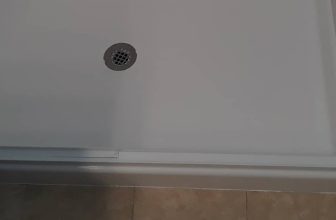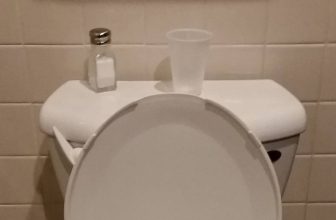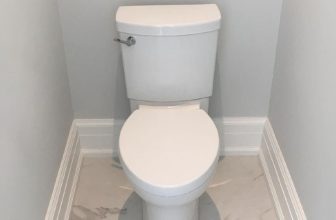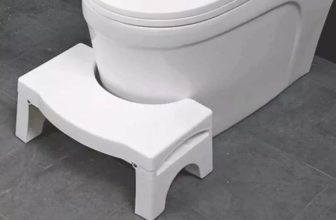Dual Flush vs Single Flush Toilets – Pros, Cons and Comparison
Single flush toilets have a long history in our homes, so there’s no wonder many people don’t feel prepared with the time-tested, straightforward fixture. Yet, the dual flush vs single flush debate won’t seem to end.
There’s a popular belief now that using a dual flush mechanism is both a privilege and a way of showing your responsible attitude.
Is it true though? In this article, I’m sharing my opinion as an experienced plumber as to when a good old single flush toilet may be a worthier option than a contemporary dual flush one.
The Dual Flush vs Single Flush Dilemma
Before you decide on your next bathroom upgrade, it’s important that you find out the difference between the two basic flush types and whether your family is likely to benefit from either one.
How are the two toilet types different?
As the names duly suggest, the core difference between dual vs single flush toilets is the way they use water to remove waste from the bowl.
Single flush toilets are the ones with a long history. This is a rather straightforward design that doesn’t differentiate between the various uses of toilets that we might have nowadays. Each single flush toilet is built to use a certain amount of water when flushing.
If you look at the specifications, you’ll most probably find it expressed as gallons per flush, often abbreviated to gpf. Every time you press the button/lever, the said amount is bound to literally go down the drain.
What is a dual flush toilet, then? The invention was introduced to save water by enabling the user to decide how much they want to use.
Traditionally represented by a double button, the system lets you choose between a light flush for liquid waste or a full one for solids. The term refers to the dual water consumption rate rather than a specific flushing mechanism.
Benefits and disadvantages of dual vs single flush toilets
The most obvious parameter when it comes to contrasting dual and single flush toilets is water consumption.
A single flush mechanism is generally considered to be a less efficient approach.
This is because it’s built for the worst-case scenario, which in the context of toilets means solid waste, and thus needs to send enough water down the pipes to leave the bowl sparkling clean and the user happy. The key implication is very likely overused water when dealing with liquid waste.
The good news is that the days when an average single flush toilet used around 3.6 gallons of water per flush are long gone. Today’s market offers a selection of high-efficiency and ultra-high-efficiency single-flush toilets. These boast a minuscule water consumption rate starting at about 1.0 gpf, although applied across uses.
Single flush toilets are much-liked for their simplicity and affordability. Most use widely spread spare parts that are easy to get and relatively cheap to maintain. Besides, they often come with levers rather than buttons, which is a welcome feature for elderly people as well as those with certain health impairments affecting the hand and/or the wrist.
Dual flush toilets will save you water and, over the long term, money. There are areas where you might be offered a rebate for using a dual flush, high-efficiency, or ultra-high efficiency toilet. This is likely to make up for dual flush toilet cost as a major disadvantage of this type.
Indeed, the ability to choose between two water consumption rates is associated with higher prices than the traditional single flush option. This might also affect maintenance when it comes to servicing the flushing mechanism.
Finally, the most common trigger solution is a dual button that might be not so convenient for certain populations, including people with disabilities and, according to some of my clients, people who like to keep their nails long — a flush button is a recipe for a broken nail, they say.
Luckily, models that combine the intuitive, easy-to-use lever design with dual-flush functionality have appeared on the market.
Dual vs Single Flush FAQ
This section briefly answers the most common questions regarding toilet flush types.
What is the difference between single and dual flush toilets?
With a single flush toilet, you have a pre-set water consumption rate, usually measured in gallons per flush. That is, you use the same amount of water regardless of your purpose.
This is associated with excessive water consumption in some cases. By contrast, dual flush models offer you a choice between two flushing modes depending on the kind of waste you are dealing with.
How does a dual flush toilet work?
A dual flush system is interactive in that it enables the user to choose the amount of water needed based on the waste type. Two modes are available. A single light flush, meant to remove liquid waste effectively, can use as little as 0.6 gallons per flush, while the full flush for dealing with solid waste involves up to a full 1.6 gallons per flush.
Are dual flush toilets better?
This is not a question that is easily answered. The dual flushing mechanism does help reduce water consumption, which is a more environmentally responsible approach and potentially a money-saving strategy. Such toilets tend to be costlier to buy, though.
Generally, though, given the improvements on the dual flush trigger design offered by some manufacturers, a dual flush toilet is likely to prove beneficial to an average family in the long run.
Are Dual Flush Toilets Worth It in the End?
While it is true that dual flush is a great way of helping the planet, as well as reducing your water bills, this is likely to come at a cost in the short-term perspective.
It appears that models that offer variable water consumption tend to be more expensive and possibly challenging to use for people with certain disabilities, and don’t forget to take into account the maintenance cost and spare part availability.
Now that you know the pros and cons of each type, do you think dual flush is a good idea for your family? Please share your thoughts in the comments!
Also read:
- Round vs Elongated Toilet
- Wood vs Plastic Toilet Seat
- Best 1.28 Gpf Toilet
- Toilet Wax Ring
- How to Fix a Running Toilet Without a Ball Float
- How to Clean Toilet Jets





